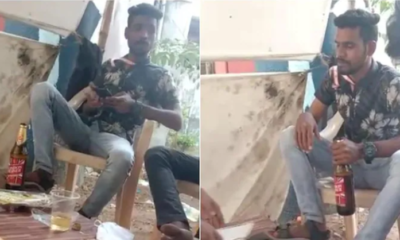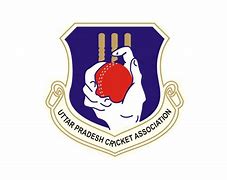Feature
Shashi Kapoor conferred Dadasaheb Phalke Award

Mumbai: Bollywood’s evergreen charmer Shashi Kapoor was on Sunday conferred the Dadasaheb Phalke Award, the highest honour in Indian cinema, by Information and Broadcasting Minister Arun Jaitley at the iconic Prithvi Theatre here.
The 77-year-old was wheeled on to the stage by his son Kunal and daughter Sanjana before an august gathering.
Shashi — the star of over 150 films in his over 40-year career — was all smiles upon receiving the Swarn Kamal (Golden Lotus), a cash prize of Rs.10 lakh and a ceremonial shawl, which he accepted with reverence and folded hands.
“Shashi Kapoor is undoubtedly one of the most versatile personalities Indian cinema has produced. An actor par excellence, who competed in his time with the very best and almost competed with different generations of film actors,” Jaitley said.
“He even produced and directed various kinds of films; combined commercial cinema with alternative cinema; defined languages and brought Hindi cinema and Hollywood closer. Then also, he didn’t leave his love for theatre,” he added.
The gathering saw the presence of Shashi’s nephew Rishi Kapoor, grand-nephew Ranbir Kapoor, grand-neice Karisma Kapoor and others like Neetu Singh, Amitabh Bachchan, Abhishek Bachchan, Waheeda Rehman, Asha Parekh, Nafisa Ali, Saif Ali Khan and Rekha.
Due to Shashi’s ill health, he could not travel to the capital for the National Awards ceremony on May 3. So, minister Jaitley flew in here to confer the award on him at Prithvi Theatre, which Shashi launched with his late wife Jennifer Kendal in 1978.
Jaitley said it’s a “a fitting tribute…the award is being physically and symbolically conferred on him in an institution that he himself created – the Prithvi Theatre”.
This is the third Dadasaheb Phalke Award for the illustrious Kapoor family after Shashi’s father Prithviraj Kapoor and elder brother Raj Kapoor.
“The way it (the family) produces talent, I’m sure that it’s not the last one. My best wishes to you for a improved health and a very long life. We wish you all the best, Shashi Kapoor,” Jaitley said.
A special audio-visual celebrating Shashi’s film and personal journey was also screened at the event. It featured Amitabh, Shabana Azmi, Sharmila Tagore, Rishi, Randhir Kapoor among others talking about the cinematic icon.
Amitabh, who has co-starred with Shashi in films like “Trishul”, “Silsila”, “Kabhi Kabhie” and “Kaala Patthar”, thanked him for always being a “compassionate person and a generous and caring friend”.
Since it was also Mother’s Day on Sunday, Rishi aptly recounted Shashi’s trademark dialogue — “Mere paas maa hai” — to a loud applause.
Shashi started his tryst with acting at the age of four, with plays directed and produced by his father Prithviraj.
He started acting in films as a child artiste in the late 1940s. His best known performances as child artiste were in “Aag” (1948) and “Awaara” (1951), where he played the younger version of the character played by his elder brother Raj.
When he grew up, he made his debut as a leading man in the 1961 film “Dharmputra”, and went on to appear in more than 150 Hindi films.
A popular name in Bollywood during the 1960s, 1970s and until the mid-1980s, Shashi was one of India’s first actors to go international. He is known internationally for starring in many British and American films, notably Merchant Ivory Proudctions run by Ismail Merchant and James Ivory, such as “The Householder” (1963), “Shakespeare Wallah” (1965), “Sara Akash” (1969), “Bombay Talkie” (1970) and “Heat and Dust” (1982).
He also starred in other British and American films such as “Siddhartha” (1972) and “Muhafiz” (1994).
In 1978, Shashi set up his production house Film Valas, which produced critically acclaimed films such as “Junoon” (1978), “Kalyug” (1981), “36 Chowringhee Lane” (1981), “Vijeta” (1982) and “Utsav” (1984).
He also produced and directed a fantasy film titled “Ajooba”, which had Amitabh and Rishi in the lead roles.
In 2011, he was honoured with the Padma Bhushan, and he is also a proud recipient of three National Film Awards.
Entertainment
Meghalaya Reserves Legalized Gambling and Sports Betting for Tourists

The State Scores Extra High on Gaming-Friendly Industry Index
Meghalaya scored 92.85 out of 100 possible points in a Gaming Industry Index and proved to be India’s most gaming-friendly state following its recent profound legislation changes over the field allowing land-based and online gaming, including games of chance, under a licensing regime.
The index by the UK India Business Council (UKIBC) uses a scale of 0 to 100 to measure the level of legalisation on gambling and betting achieved by a state based on the scores over a set of seven different games – lottery, horse racing, betting on sports, poker, rummy, casino and fantasy sports
Starting from February last year, Meghalaya became the third state in India’s northeast to legalise gambling and betting after Sikkim and Nagaland. After consultations with the UKIBC, the state proceeded with the adoption of the Meghalaya Regulation of Gaming Act, 2021 and the nullification of the Meghalaya Prevention of Gambling Act, 1970. Subsequently in December, the Meghalaya Regulation of Gaming Rules, 2021 were notified and came into force.
All for the Tourists
The move to legalise and license various forms of offline and online betting and gambling in Meghalaya is aimed at boosting tourism and creating jobs, and altogether raising taxation revenues for the northeastern state. At the same time, the opportunities to bet and gamble legally will be reserved only for tourists and visitors.
“We came out with a Gaming Act and subsequently framed the Regulation of Gaming Rules, 2021. The government will accordingly issue licenses to operate games of skill and chance, both online and offline,” said James P. K. Sangma, Meghalaya State Law and Taxation Minister speaking in the capital city of Shillong. “But the legalized gambling and gaming will only be for tourists and not residents of Meghalaya,” he continued.
To be allowed to play, tourists and people visiting the state for work or business purposes will have to prove their non-resident status by presenting appropriate documents, in a process similar to a bank KYC (Know Your Customer) procedure.
Meghalaya Reaches Out to a Vast Market
With 140 millions of people in India estimated to bet regularly on sports, and a total of 370 million desi bettors around prominent sporting events, as per data from one of the latest reports by Esse N Videri, Meghalaya is set to reach out and take a piece of a vast market.
Estimates on the financial value of India’s sports betting market, combined across all types of offline channels and online sports and cricket predictions and betting platforms, speak about amounts between $130 and $150 billion (roughly between ₹9.7 and ₹11.5 lakh crore).
Andhra Pradesh, Telangana and Delhi are shown to deliver the highest number of bettors and Meghalaya can count on substantial tourists flow from their betting circles. The sports betting communities of Karnataka, Maharashtra, Uttar Pradesh and Haryana are also not to be underestimated.
Among the sports, cricket is most popular, registering 68 percent of the total bet count analyzed by Esse N Videri. Football takes second position with 11 percent of the bets, followed by betting on FIFA at 7 percent and on eCricket at 5 percent. The last position in the Top 5 of popular sports for betting in India is taken by tennis with 3 percent of the bet count.
Local Citizens will Still have Their Teer Betting
Meghalaya residents will still be permitted to participate in teer betting over arrow-shooting results. Teer is a traditional method of gambling, somewhat similar to a lottery draw, and held under the rules of the Meghalaya Regulation of the Game of Arrow Shooting and the Sale of Teer Tickets Act, 2018.
Teer includes bettors wagering on the number of arrows that reach the target which is placed about 50 meters away from a team of 20 archers positioned in a semicircle.
The archers shoot volleys of arrows at the target for ten minutes, and players place their bets choosing a number between 0 and 99 trying to guess the last two digits of the number of arrows that successfully pierce the target.
If, for example, the number of hits is 256, anyone who has bet on 56 wins an amount eight times bigger than their wager.























